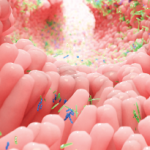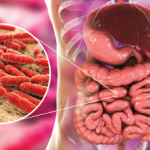Which led to the next research question: What is the critical factor that causes a Th17 cell to become pathogenic?
Previous studies had shown that the signaling proteins TGF-β and IL-6 somehow work together to “turn on” the pathogenic functions of Th17 cells. But Dr. Cua’s most recent experiments have shown that it’s not TGF-β and IL-6, but IL-23 that drives Th17 cells to become pathogenic.
As more and more is learned about Th17 cells, the “new kids on the block,” Dr. Cua is most optimistic about their growing clinical applications. He predicts that widespread treatment using some of these targets is still five to 10 years down the road. But he also mentioned specifically one drug—a monoclonal antibody to one of the molecular subunits of IL-23—that is currently being tested on patients with psoriatic arthritis in phase-3 clinical trials. The randomized, double-blind trials have been going on since December 2005, with good results: patients receiving the therapy showed improvement in both arthritis and psoriasis skin lesions. As Dr. Cua said excitedly about the trials, “it actually gives you goose bumps.”
Virginia Hughes is a medical writer based in New York City.

